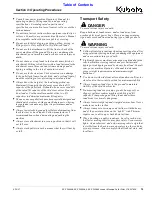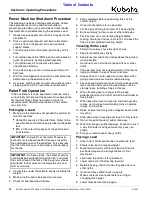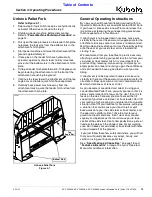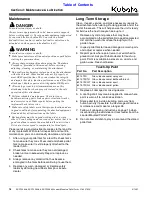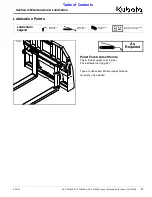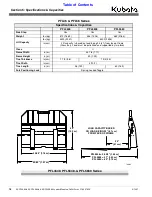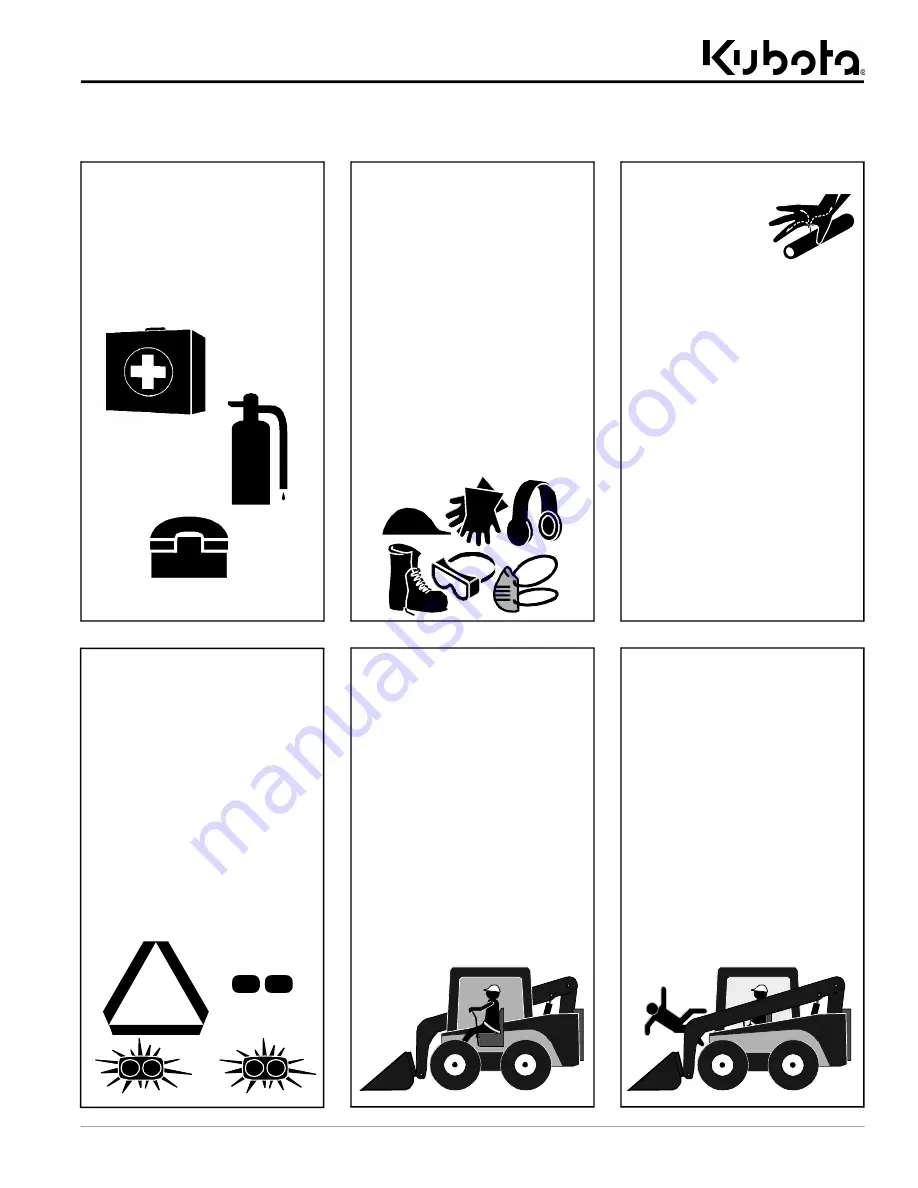
Important Safety Information
4/13/21
3
These are common practices that may or may not be applicable to the products described in
this manual.
Prepare for Emergencies
Be prepared if a fire starts.
Keep a first aid kit and fire
extinguisher handy.
Keep emergency numbers for
doctor, ambulance, hospital, and
fire department near phone.
911
Use Safety
Lights and Devices
A slow moving power machine
can create a hazard when driven
on public roads. They are difficult
to see, especially at night. Use
the Slow Moving Vehicle (SMV)
sign when on public roads.
Flashing warning lights and turn
signals are recommended
whenever driving on public roads.
Keep Riders Off
Machinery
Never carry riders on skid steer
or attachment.
Riders obstruct operator’s view
and interfere with the control of
the power machine.
Riders can be struck by objects
or thrown from the equipment.
Never use skid steer or
attachment to lift or transport
riders.
Use Seat Belt and ROPS
Kubota recommends the use of a
CAB or roll-over-protective-
structures (ROPS) and seat belt
in almost all power machines.
Combination of a CAB or ROPS
and seat belt will reduce the risk
of serious injury or death if the
power machine should be upset.
If ROPS is in the locked-up
position, fasten seat belt snugly
and securely to help protect
against serious injury or death
from falling and machine
overturn.
Avoid High Pressure
Fluids
Escaping fluid
under pressure will
penetrate the skin or
eyes causing serious injury.
Relieve all residual pressure
before disconnecting hydraulic
lines or performing work on the
hydraulic system.
Make sure all hydraulic fluid
connections are properly
tightened/torqued and all
hydraulic hoses and lines are in
good condition before applying
pressure to the system.
Use a piece of paper or
cardboard, NOT BODY PARTS,
to check for suspected leaks.
Wear protective gloves and
safety glasses or goggles when
working with hydraulic systems.
DO NOT DELAY.
If an accident
occurs, seek immediate
emergency medical care or
gangrene may result.
Wear Personal Protective
Equipment (PPE)
Wear protective clothing and
equipment appropriate for the job
such as safety shoes, safety,
glasses, hard hat, dust mask,
and ear plugs.
Clothing should fit snug without
fringes and pull strings to avoid
entanglement with moving parts.
Prolonged exposure to loud noise
can cause hearing impairment or
hearing loss. Wear suitable
hearing protection such as
earmuffs or earplugs.
Operating a machine safely
requires the operator’s full
attention. Avoid wearing
headphones while operating
equipment.

















